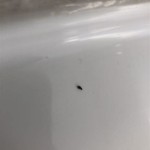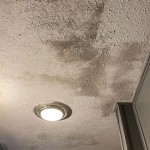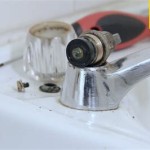How to Remove Bees From a Bathroom Vent
Discovering a beehive in your bathroom vent can be a frightening experience. Bees, while beneficial to the environment, can pose a danger to humans when they feel threatened. Removing them requires a cautious approach to guarantee both your safety and their well-being. This article will guide you through the process of identifying the type of bee, understanding potential risks, and implementing safe removal methods.
Identifying the Bee Species
The first step in dealing with bees in your bathroom vent is to accurately identify the species. Knowing the type of bee will determine the best course of action.
Honeybees: These are the most common type found in homes and are generally not aggressive unless provoked. They create wax combs and store honey.
Bumblebees: These bees are larger and fuzzier than honeybees. They are less likely to build a permanent hive in your vent. They typically create nests in the ground or in cavities.
Carpenter Bees: Unlike other bees, these bees do not form colonies but prefer to build their nests in wood. They bore holes into wood to lay their eggs, which can lead to damage to your home.
Yellow Jackets: These social wasps, often mistaken for bees, are aggressive and sting repeatedly. They can build nests in attics, walls, and even in underground cavities.
Assessing the Risks
Once you identify the species, assess the potential risks involved. Consider the following:
Bee Behavior: Are the bees aggressive? If they are agitated or swarming, it's best to avoid direct contact.
Nest Location: The location of the hive within the vent will influence the removal process. For example, a hive located deep within the vent may require professional assistance.
Size of the Hive: A small hive may be easier to remove than a large, established colony.
Allergic Reactions: If you or someone in your household is allergic to bee stings, it's crucial to take extra precautions or seek professional help.
Removing the Bees
Once you've assessed the risk, you can choose the appropriate removal method. Remember, safety comes first. It's always best to err on the side of caution and seek professional help if you are unsure or uncomfortable with the task.
Option 1: DIY Removal (For Smaller Nests)
Materials: * Insecticide spray specifically designed for bees and wasps (follow product instructions) * Protective gear: long-sleeved shirt, pants, gloves, face mask, and eye protection * A flashlight * A vacuum cleaner with a hose attachment (optional)
Steps: 1.
Seal off the area:
Close all windows and doors to prevent bees from escaping. 2.Wait for evening:
Bees are less active at night, making removal safer. 3.Apply insecticide:
Carefully spray the insecticide directly into the vent, targeting the entrance of the hive. 4.Remove the nest:
Once the bees are incapacitated, use a vacuum cleaner with a hose attachment (optional) to remove the nest. Alternatively, use a plastic bag to carefully remove the nest. 5.Dispose properly:
Seal the nest in a plastic bag and throw it in the trash.Option 2: Professional Assistance
If the hive is large, in a difficult-to-reach location, or you are uncomfortable with DIY removal, it's best to contact a professional pest control company. They have the expertise and equipment for safe and effective removal.
Professional Removal Benefits: * They are equipped to handle large hives and aggressive bees. * They use safe and effective methods to eliminate bees without harming the environment. * They offer a guarantee for their services, providing peace of mind.
Preventative Measures
After removing the bees, take preventative measures to deter them from returning.
Seal Entry Points: Repair any cracks or holes in your home's exterior, particularly around vents and windows.
Maintain Yard Hygiene: Keep your yard free of debris and standing water, which attracts insects.
Use Pest Repellents: Consider using natural repellents like peppermint oil or citronella candles to keep bees away.
Regular Inspections: Regularly check your home exterior and vents for any signs of bee activity.
Following these steps will help ensure your safety and keep your home free from unwanted bee guests. Remember, if you encounter a bee problem that's causing concern, it's always best to consult a professional pest control company for assistance.

Yellow Jacket Nest In Bathroom Exhaust

How To Get Rid Of Wasps In Vent

How To Get Rid Of Wasps In Vent

Wasps In The Bathroom Causes And Solutions For This

Get Rid Of Wasps In Bathroom Fan Vent Safe Effective
How To Eliminate A Wasp From House Quora

How Can I Keep Wasps From Coming Through An Outdoor Vent Hometalk

How To Get Rid Of Bees Or Bee Hive From Home Pest Control

What Should You Do If Have Bees In The Vent Of A Building

This Is Why You Keep Finding Wasps In Your Bathroom And Here S What Can Do About It Heart
Related Posts







